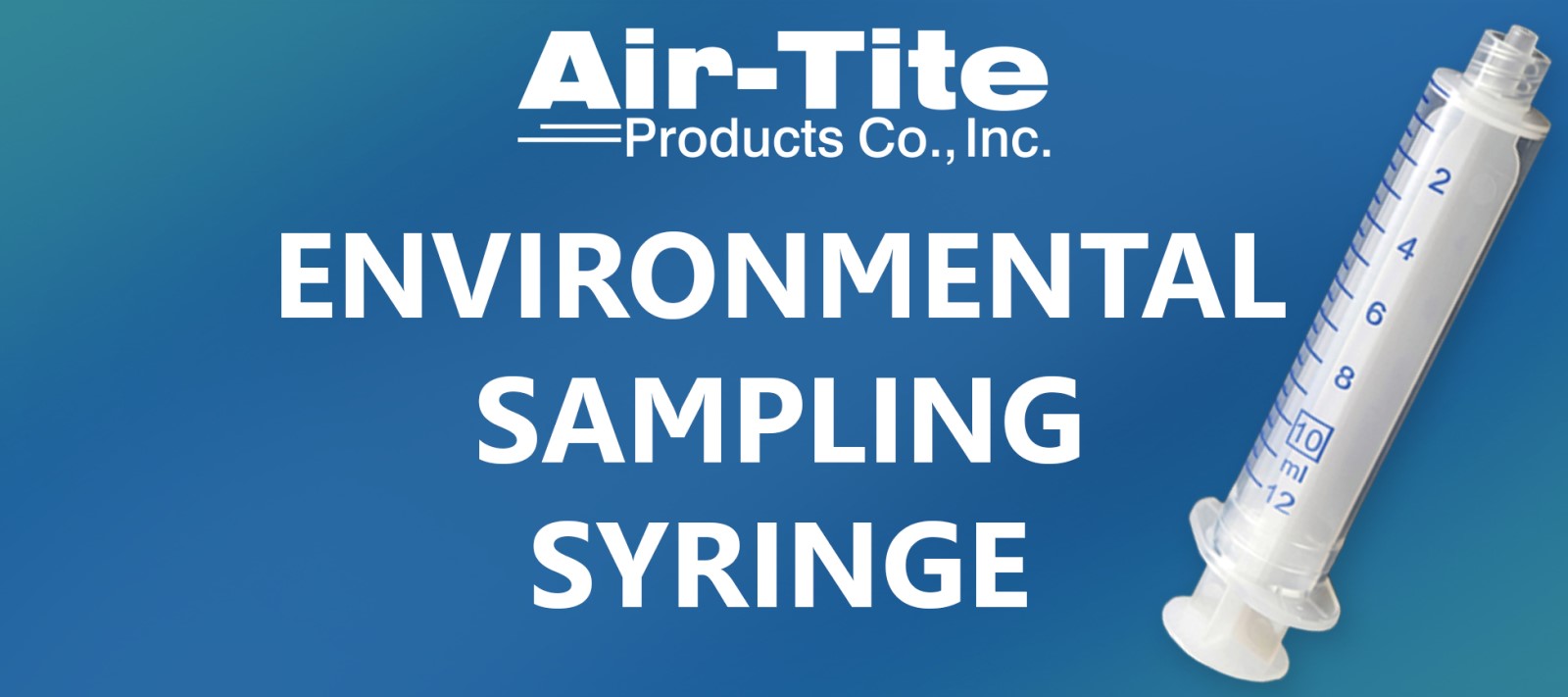
Syringes aren’t just designed for human and animal health. They also play a vital role in environmental sampling, including water and soil testing.
These days, precision in environmental sampling is more critical than ever before. Today’s standards demand a level of accuracy in the parts per billion. As a result, sampling tools like syringes must leave no room for error or contamination.
For successful environmental sampling, it’s crucial to do your research before you buy. Here’s what you should know about choosing a high-quality environmental testing syringe that fits the bill.
One of the first things to think about when shopping for a syringe is how much volume you need for the task at hand. Once you decide on the appropriate volume, it’s time to determine the best syringe design.
While three-part syringes have their place in many other applications, two-part syringes are the best choice for all environmental samples. Two-part syringes minimize the risk of possible contaminants and chemical incompatibility, both of which could compromise the validity of your results.
Finally, you’ll need to decide whether glass or plastic syringes make more sense for your needs. Since there are benefits and drawbacks to either option, this choice is more open to personal preferences.
Both glass and plastic syringes may be used for environmental sampling. Weighing the characteristics of each type can help you find the best material and value.
Glass syringes are exceptionally clean and sterile. They can also be stored for long periods of time. However, glass is more expensive and breaks easily. In addition, glass syringes can be heavy and harder to handle than lightweight plastic syringes.
Plastic syringes can also be a desirable and sterile option, particularly because they are disposable and may come individually packed. While plastic syringes aren’t ideal for long-term storage, they are relatively inexpensive.

Choosing the right syringe is an important first step to getting a good sample. But it’s also essential to follow proper protocol to ensure the quality of environmental samples.
For example, the Environmental Protection Agency advises that before extrusion, always ensure that no air gets trapped behind the sample.
Samplers should wear non-powdered, disposable gloves, switching to a new clean pair for each sample collection. Special care should be taken to prevent gloves from contacting any sample media. If there are any doubts about cleanliness during sampling, it’s best to err on the side of caution and change gloves.
When collecting soil samples in contaminated areas, start with sites suspected to have less contamination first before progressing to more highly contaminated areas. Any samples that are believed to have high levels of contaminants should be stored and handled separately.
The use of sterile syringe caps is important to protect the integrity of your sample. When a sample is collected, a syringe cap provides an air-tight seal, ensuring that bacteria and other contaminants do not come in contact with the sample.
It’s also worth noting that syringes may be modified by removing the top cap or needle mounting area for soil samples. Refer to your state’s regulatory agencies for more information on the specific sampling requirements in your area.
Air-Tite’s a group of experienced syringe and needle experts has earned a reputation for high-quality service since the company’s early beginnings in 1926. We specialize in hypodermics, shipping to approved vendors in human healthcare, veterinary medicine, and laboratory science, among others. We import only the best quality products from manufacturing leaders in ten different countries including Germany, Japan, and the US.
Our knowledgeable customer support team can help you find specialized products for unique circumstances. If you’re having trouble finding exactly what you need, our in-house brand can help develop customized products just for you.
Most laboratory and medical applications are well-suited for disposable three-part syringes. However, these products typically contain silicone lubricants and rubber plungers that may pose a risk of contamination during environmental sampling.
Instead, choosing a two-part syringe helps minimize this risk, such as the NORM-JECT® and Henke-Ject® syringes available through Air-Tite.
These two-part syringes are completely free from latex, rubber, silicone oil, and di(2-ethylhexyl) phthalate or DEHP. They are made from lab-grade polypropylene and polyethylene to ensure a more chemically resistant syringe when compared to their rubber-tipped counterparts. For convenience, each syringe is individually sterile strip packed. The NORM-JECT ® and Henke-Ject® syringes also contain a positive safety stop to make your job easier and help prevent accidental spills.
Find a range of popular sizes between 3ml and 20ml. Large, 50ml syringes have been discontinued, but our staff can help you find a suitable alternative if needed.
You can view transparent and competitive pricing right on Air-Tite’s website without having to sign up for an account or speak to a representative. We’re so confident in the quality and value of our products that we keep the door open for new and returning customers to come to us when they’re ready. Click below to browse syringes for environmental sampling.